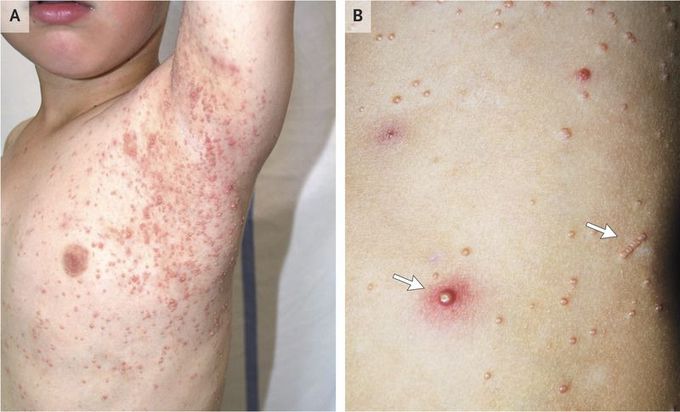


Molluscum Contagiosum in a Patient with Atopic Dermatitis
A 7-year-old boy presented to the dermatology clinic with a 3-month history of widespread, mildly pruritic skin lesions. He had a history of atopic dermatitis that had been treated with topical glucocorticoids for several months. The skin examination revealed numerous flesh-colored papules measuring 2 to 5 mm in diameter over the chest and axilla (Panel A). Some papules were umbilicated, and some were arranged linearly (Panel B, arrows). A clinical diagnosis of molluscum contagiosum, an infection caused by a poxvirus, was made. Molluscum contagiosum is a common childhood skin infection that is transmitted by direct contact and by fomites (e.g., towels). In healthy children, molluscum contagiosum is usually self-limiting. In children with atopic dermatitis, infection can be widespread and prolonged, since the altered epidermal barrier leads to increased susceptibility to viral skin infections, to pruritus leading to scratching and autoinoculation, and to long-term treatment with topical antiinflammatory agents. In this patient, the topical glucocorticoids were discontinued, after which marked erythematous inflammatory lesions developed, followed by complete regression of the lesions during a period of 3 to 4 months.
Spider Sense Male Enhancement: Review the Supplement Ingredient Benefits

